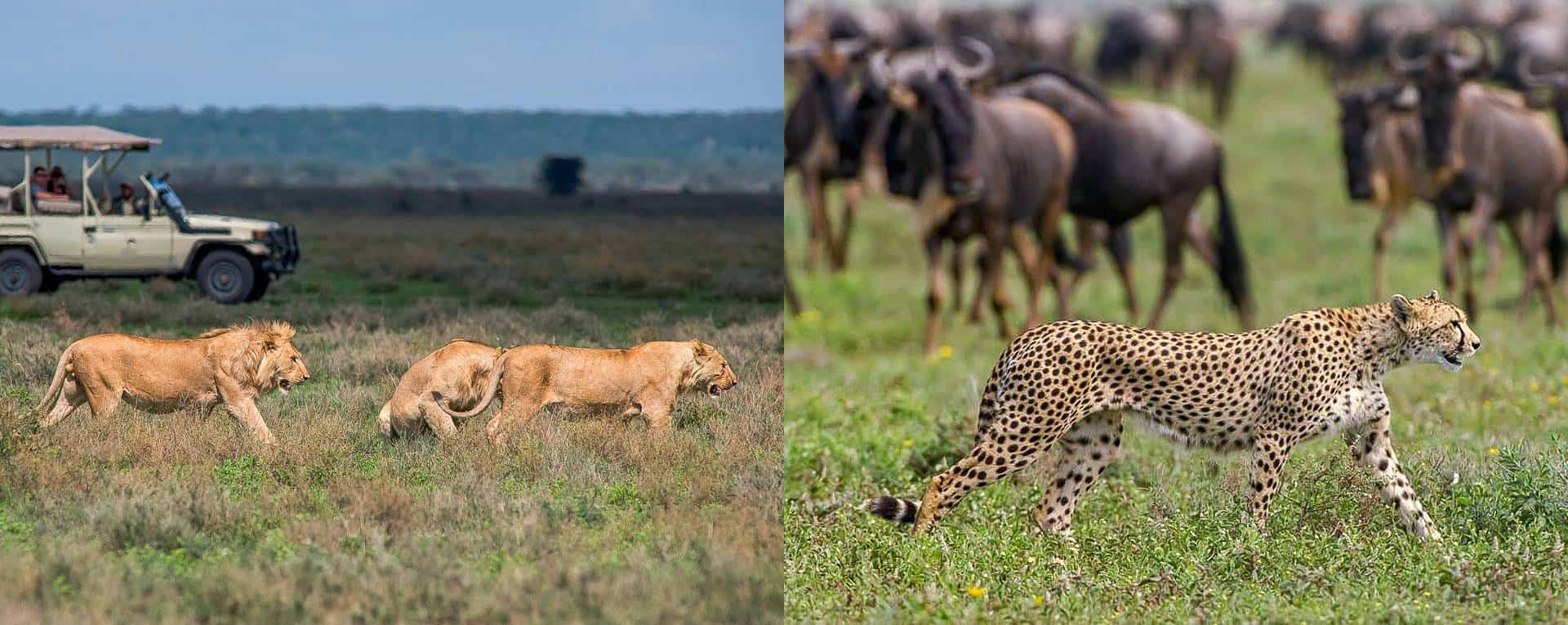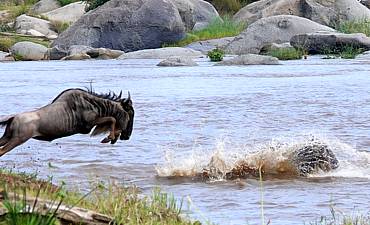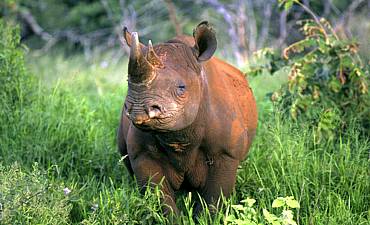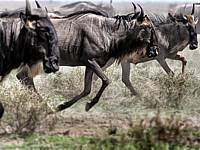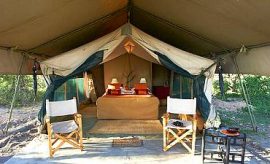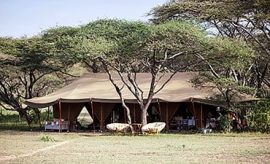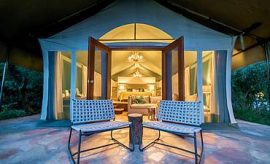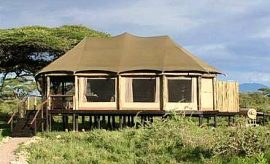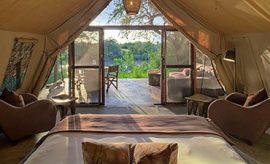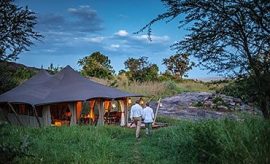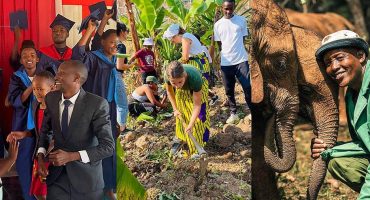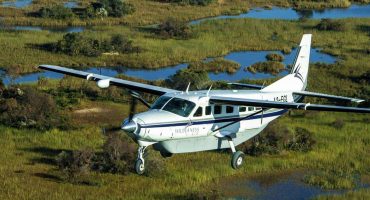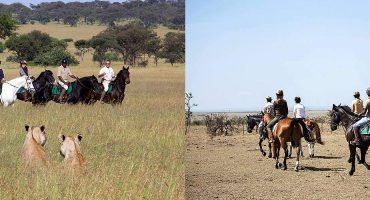GUIDE ON SERENGETI NATIONAL PARK IN TANZANIA
2025 And Upcoming 2026 Tracker Updates (2024 Ended) On The Great Wildebeest Migration Herd In Serengeti
Navigation Tip 1 - Go Directly To Safari & Tour Planning Section For Serengeti
The Serengeti National Park was established nearly a hundred years ago as a colonial game reserve, made a National Park in 1951, and later endorsed as a UNESCO World Heritage Site in 1979. One of the last remaining areas of untouched wilderness, it lies securely in the Serengeti ecosystem, an area that stretches from the woodlands, lakes and grassy plains of Ndutu in southern Serengeti to the northern verdant river expanse till Masai Mara National Reserve in Kenya.This ecosystem covers 25,000 square kilometers, within which the Serengeti National Park consists of almost 15,000 square kilometers of protected ecological treasures, to be discovered on an AfricanMecca dream safari vacation to Tanzania. Any ecosystem is composed of interlinked and interdependent phenomena, including the topography, climate and situation, the wildlife and the effects of human usage.
The climate of the Serengeti is defined by periods of rain and drought. The geography of the area ranges from apparently limitless grass plains in the south, fertilized by volcanic ash rich in life-giving phosphates, to wooded highlands in the east, crossed by rivers and studded with island outcrops or kopjes of eroded granite, home to hundreds of vulnerable inhabitants such as the rare black rhinoceros.
Watch Video On The Serengeti Experiences
Across these vast plains range a fantastic cast of wild fauna including impressive numbers of hooved herbivores, predators and avi-fauna. Amongst them, the principal actors are blue wildebeest or gnu (a.k.a. white-bearded wildebeest), determining the nature of the ecosystem by their spectacular annual Great Migration, “The Greatest Show Of The Natural World”, during which they trek in circumambulation, in their millions, 3200 kilometers from northern Tanzania to south-western Kenya and back again, as the plains dry out seasonally, forcing them to seek fresh pastures.
In turn, their odyssey affects other creatures. Lions, jackals, hyenas, leopards and cheetahs prey on the migrating and resident herds. Vultures subsist on the predators’ leavings. The herds leave tons of dung which enriches the grasslands, providing food and nurseries for many varieties of dung beetles. Serengeti National Park is a wonderland in which to experience the interwoven miracles of life and death on a wondrous East African safari adventure.
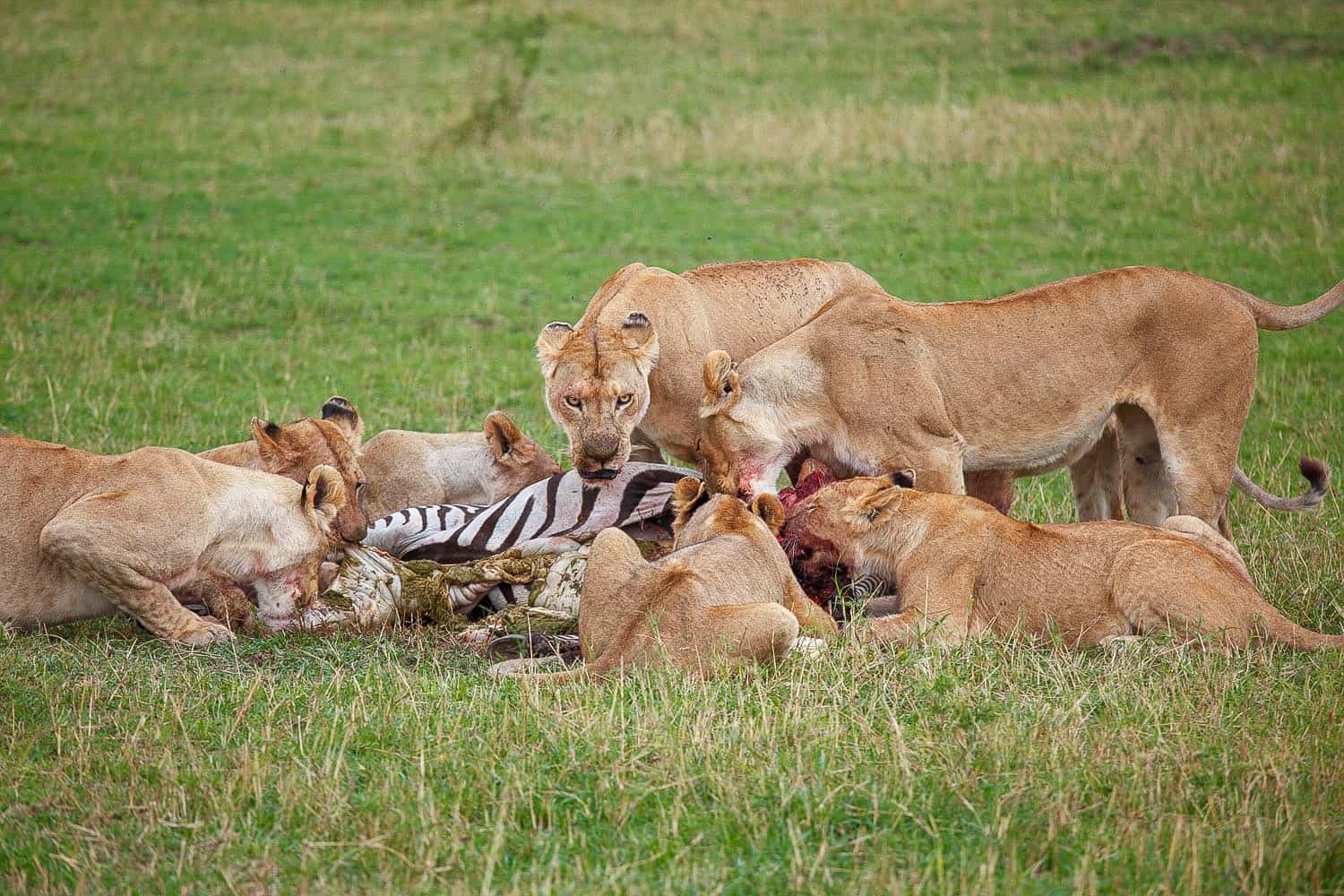
Experience The Serengeti & Its Migration - A Paradise Worth Seeing
There is still a place on Earth where life was as in the beginning; a place where life still scintillates. To the Maasai tribe, a pastoralist people in the Ngorongoro and Serengeti, this is the place where the land runs on forever, a land suspended in time, a last refuge of the largest concentration of wildlife remaining on earth; an endless array of grassy plains, woodlands and hills dotted with glorious animals of every type and size.Long ago, before the age of man, mountains to the east of this natural wildlife refuge spurted their fury, laying a long and thick blanket of volcanic ash. Entire mountain ranges were buried, leaving only the mountain summits as lone markers of an ancient world, long lost. Over the course of four million years, ash turned to rich soil yielding vast grasslands, and today cradling some of the most important animal species on earth.
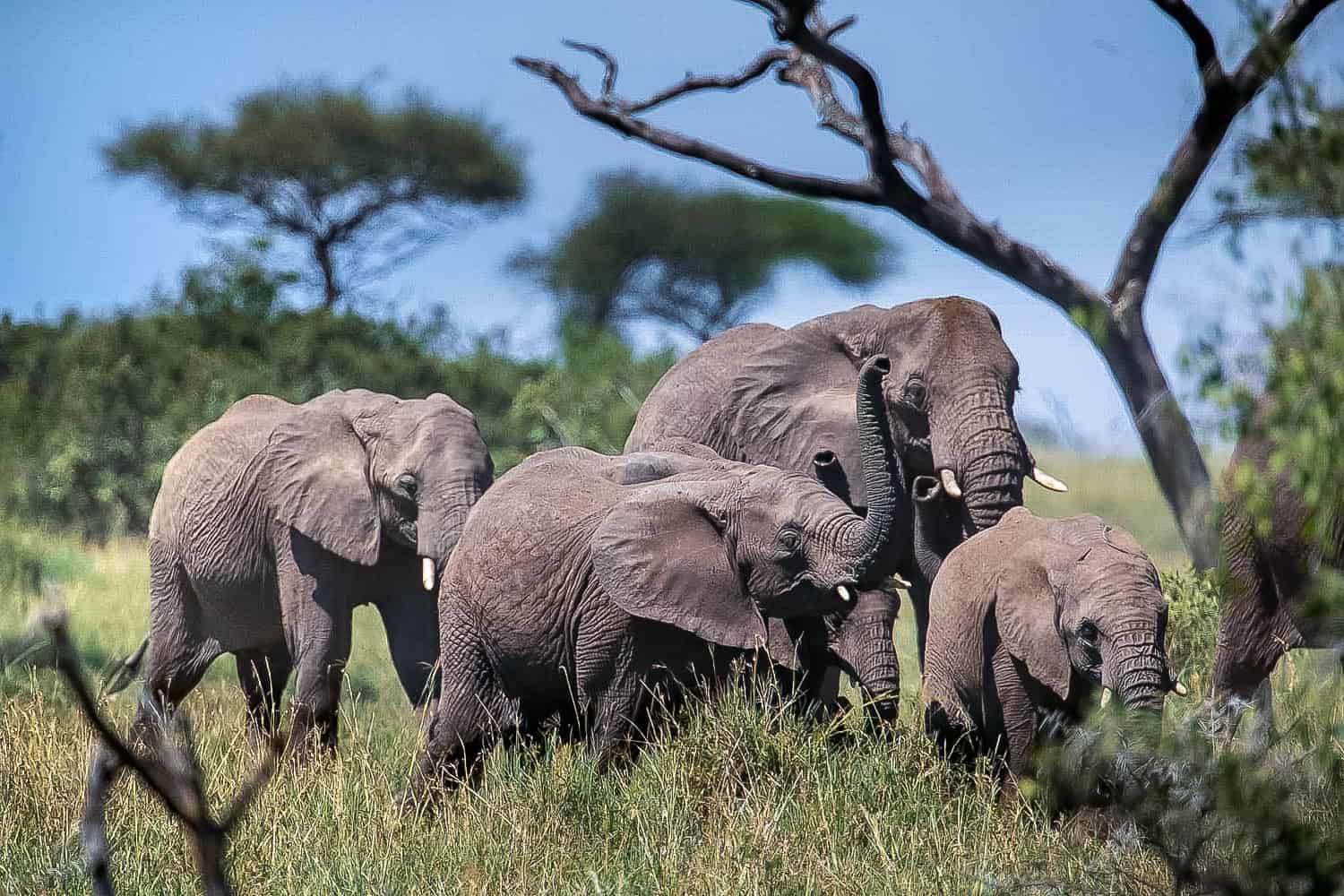
Yet of this richly diverse habitat, one species stands out from all others, as it is the foundation of the wildlife ecosystem in the Serengeti. With herds reaching over one million, it is the wildebeest that affects many other species. Often called the Serengeti Clown, the wildebeests are magnificently endowed, ready for their endless search of rich grasslands and freshwater. Alongside this massive population of wildebeest, co-exist other herbivores, equally drawn by the rich and varied vegetation of the Serengeti.
The Serengeti, ruled by simplest of life’s principles, where herbivores eat plant, and carnivores eat herbivores, thus resulting in the magnificently rich animal life diversification; a paradise, where lions and cheetah hunt with might and stealth, a great generosity offered by the enormous wildebeest herds, where nothing is left to waste here on the Serengeti plains.
The Great Migration - Central Seronera, Grumeti & Mara Rivers, Lobo Wilderness
In the short rain season, the wildebeest herds grow strong on the short-grass plains of the southern Serengeti including the Kusini, Ndutu, Masek and Maswa wilderness. But as the lack of pasture and water deepens around April, it demands movement, a defining moment for the wildebeest herds…migrate or starve. For nearly 1.5 million animals, this becomes a race against death; against hunger and thirst.The herds accompanied by zebras and gazelles drive towards the Grumeti River west and Mara River north via central Seronera bypass, drawn toward Mother Nature’s promise of water and grass. This epic yearly journey takes place between the two African countries of Tanzania and Kenya.
The wildebeest herds migrate north towards the famed Masai Mara Reserve in southwestern Kenya, where they roam for three to four months (July, August, September to parts of October), until the rains resume and then migrate back to eastern Lobo Serengeti, becoming a deadly gauntlet of predator versus herbivore that lasts more than 800 kilometers (500 miles).
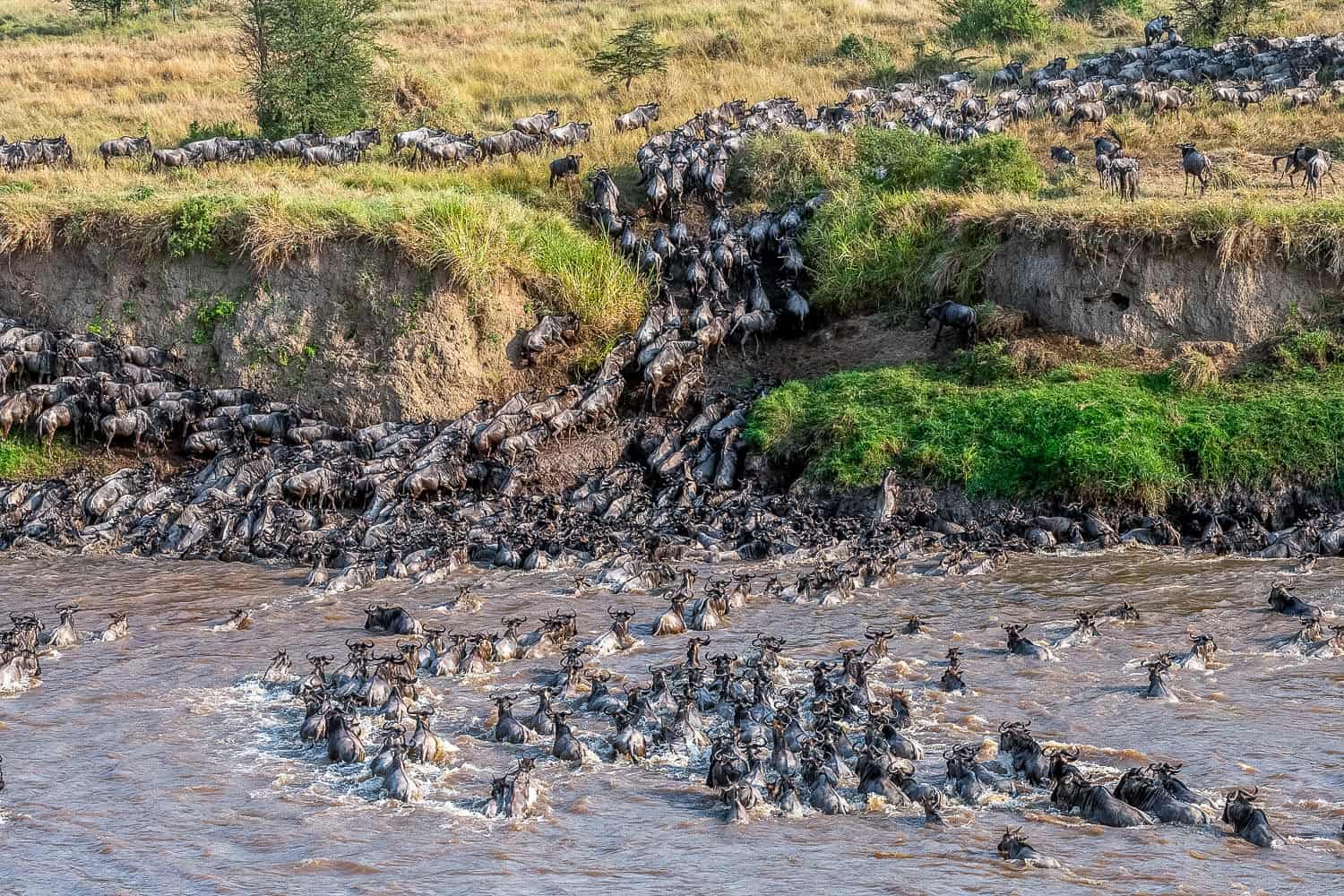
The Mating Season In Southern Serengeti - Ndutu & Kusini
The wildebeests dedicate the commencement of each migration with the breeding season in southern Serengeti. Within the first few weeks of this long migration, bulls engage in constant battles over females and territories. Within just a few weeks, 90% of all the cows are impregnated. It is during this time that the herds move past Moru’s large granite outcroppings called kopjes, now, temporarily changed to perfect vantage points for waiting predators.There is neither malice nor remorse on the Serengeti, just a paradise to eat and feed all of its own. As the migration passes through the woodlands of the Serengeti, the permanent residents, including the Maasai giraffe, look on uninterested. These need not migrate, as they feast on the permanent, drought resistant, woodland foliage – the acacia trees. Other species, like the savanna baboon, roam the woodlands by day and roosting in trees by night, feeding on almost anything within their reach. Herbivores feeding on nearby grasslands must be ever watchful of the predators.
Yet, there is one herbivore with little to worry about; the Serengeti adult elephant has virtually no enemy. After months of facing the force of strong predators, the dangers of brush fires, the wildebeest finally reach the paradise grasslands of the Masai Mara in Kenya starting July and August and, their instincts bringing them to a place of plenty. Here, they will live and range for few months until the rains return in October.
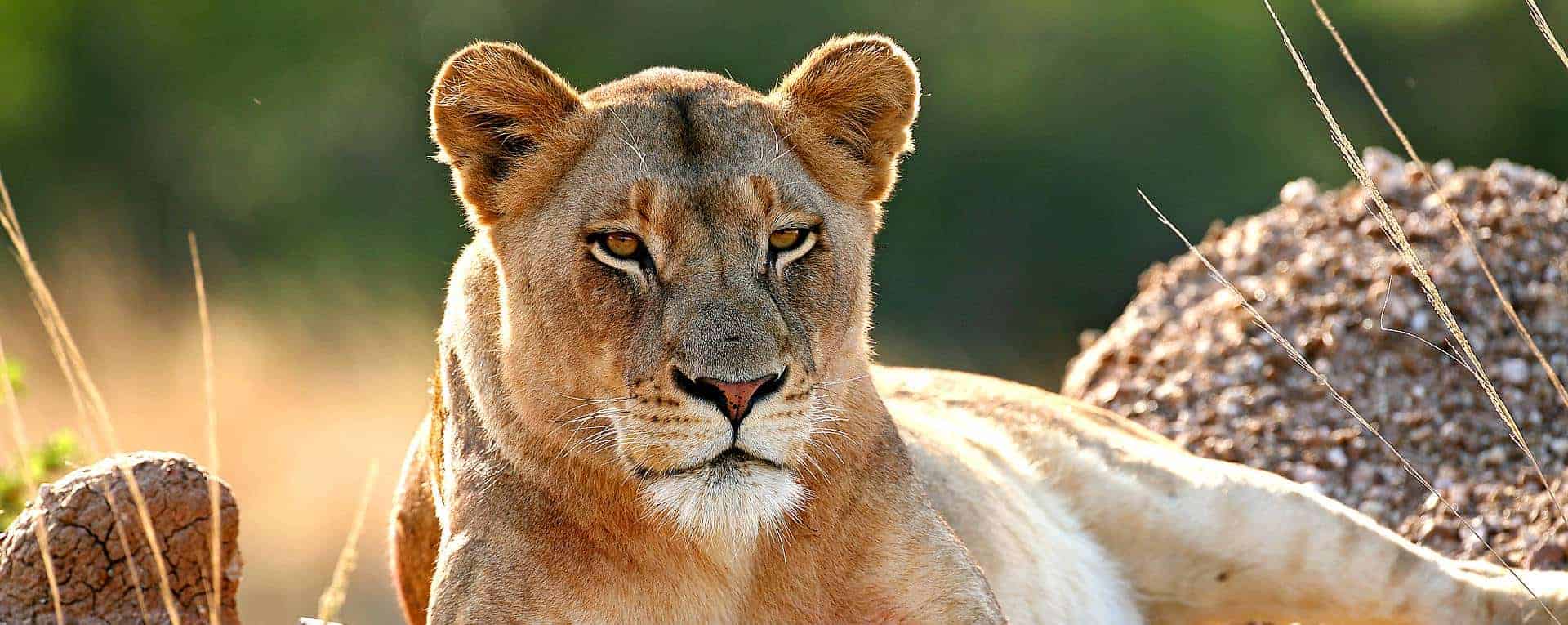
The Inimitable Precinct Of The Serengeti - The Ngorongoro Crater
To the southeast, lies a microcosm of the Serengeti, the Ngorongoro Crater, a large volcanic caldera encompassing 100 square miles of rich, fertile land. Entombed in an Eden lie rich forests and foraging vegetation, an abundant feast for resident animal species. Hippopotamus, rhinos and thousands of other animals make their home here, others only migrate for the season e.g. lesser flamingos. But, like other ecosystems, dangers lurk here too.The Ngorongoro Crater offers refuge to endangered species like the black rhino, who endures this limited paradise, as it offers protection against poachers who hunt the rhino for its precious horn, while at the same time offering a banquet of options for the ever prideful lion. Serengeti ecology is also known as the “Cradle Of Mankind”.
It was here in the southeastern plains near Ngorongoro lies Olduvai Gorge and Laetoli, wherein lies a human fossil record that dates back 3.7 million years. Today, it is the proud Maasai people that dwell here, following the pastoralist lifestyle of their chaperoned wildlife friends, the wildebeest.
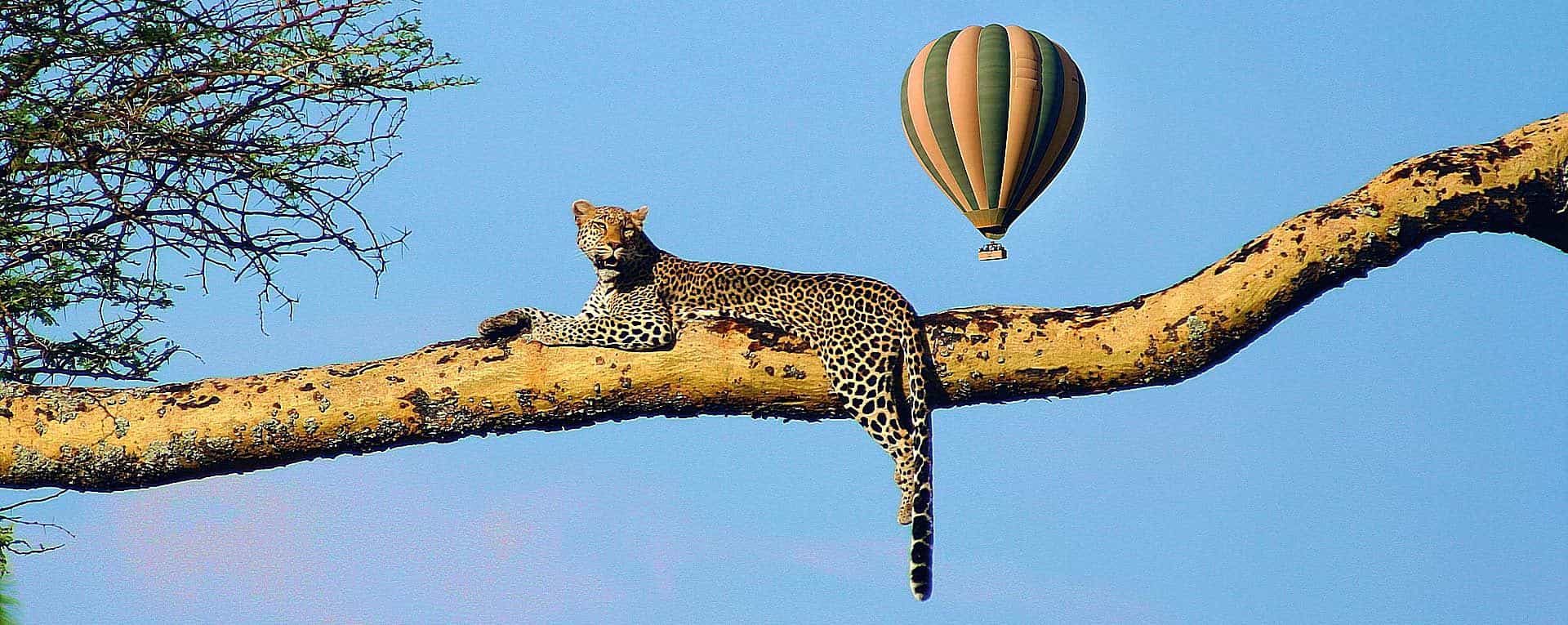
Navigation Tip 2 - Go Directly To Room Rate Guide, Reviews, Maps, Photos & Videos Section For Serengeti
Select Our Highly Recommended & Unique Designed Serengeti Safaris By Camps & Lodges That You Want To Tour Visit & Experience
Write A Review & Rate This Park
Read More +
WILDEBEEST MIGRATION
The Great Wildebeest Migration is the largest single movement of wild animals in the world, deservedly listed as one of its eight Natural Wonders and an exceptional inspiration for a dream tour.
Read More +
WHERE TO STAY IN SERENGETI
Accommodations in Serengeti come in two main types, lodges and camps. Lodges are solidly brick or stone-built complexes while camps are pitched canvas that are either permanent, seasonal or mobile units.
Read More +
SAFARI & TOUR IN SERENGETI
With your AfricanMecca guide in a custom-designed 4x4 vehicle, you will experience the wildebeest migration, the Big Five - from royal lion prides to pachyderm elephant herds on the plains and more.
Read More +
BEST TIME TO VISIT SERENGETI
There are distinct best times for a nature trip to Serengeti. Once you know what you have experienced and what more it has to offer, you will want to return time and again as each month unfolds a new chapter.
Read More +
BALLOON SAFARI IN SERENGETI
A Serengeti balloon safari is a fantastic once in a lifetime experience, particularly suitable for a bird's eye-view game viewing experience on your AfricanMecca wildlife tour in northern Tanzania.
Read More +
MAASAI TRIBE OF SERENGETI
The iconic Maasai of the Serengeti and Ngorongoro wilderness have been herding their cattle for thousands of years. A proud, nomadic warrior race who count their wealth in cattle and children.
AFRICANMECCA REVIEWS
What are our Customers saying about us? READ MORE REVIEWS![]()
AfricanMecca's professionalism and care understands that what distinguishes Africa is its authenticity, the land, people and wildlife who do not share our world of fashion and fanfare that distinguish so many travel companies today.
Cyril Christo & Marie Wilkinson, Conservation Photographers, Authors & Wildlife Documentary Producers - USA
Jambo Raza, We all had a fantastic time on our Tanzania safari. Accommodations were excellent and we loved our guide - Rodgers. We will definitely recommend this safari to others. Thanks for all your help making the arrangements.
Dr Thomas Davis, Methodist Hospital, Minnesota, United States
AfricanMecca Safaris created a remarkable honeymoon tailored to our interests and desires. The quality of service and delivery of experience was unsurpassed. I highly recommend AfricanMecca Safaris to honeymooners, families, or any traveler.
Noorin & Jason Nelson - Maryland, United States
Thanks again to you for arranging a wonderful trip for us. Everything was great from the fantastic wildlife, the scenery, the people, the accommodations and the food. The safari was everything we had hoped for.
Liz and Gunnar Kristiansen - Ontario, Canada
I booked my safari holiday through AfricanMecca. They were the most helpful company I have ever dealt with and I work within the travel industry. I had the most amazing time. The holiday went as clockwork with no hitches anywhere.
Shelley Roberts - Hemel Hempstead, United Kingdom
We have returned from our African adventure and would like to thank you very much for your part in making this such a wonderful experience. We were lucky enough to time the Great Migration from the Serengeti, which was amazing.
Denise Paterson - Belmont, Australia
We had an absolutely amazing trip in Arusha, Serengeti and Gombe - everything went smooth as silk. Thank you so much Raza for making this trip, the trip of a lifetime. We had an absolutely brilliant time.
Tiffany Heitz & Lesley Smith - California, United States
EAST AFRICA SAFARI BOOKING TRIP IDEA FOR SERENGETI IN NORTHERN TANZANIA
When visiting Serengeti National Park, we recommend combining it with your Northern Tanzania safari to Tarangire, Lake Manyara and Ngorongoro Crater. End your trip with a Swahili cultural tour and beach holiday in Zanzibar.
You may optionally extend out to offbeat parks in Southern and Western Tanzania such as Nyerere (Selous), Ruaha or Katavi ending with a chimpanzee trekking safari at Gombe or Mahale by the relaxing Lake Tanganyika.
Kickstart Your Safari Planning
ARE YOU PLANNING TO BOOK AN AFRICAN SAFARI TO SERENGETI IN TANZANIA?
Do You Need Knowledgeable, Experienced & Specialist Guidance For Your Travels In Serengeti ? Let Us Help Plan Your Trip Itinerary Correctly
CONTACT AN AFRICA TRAVEL EXPERT ON SERENGETI NATIONAL PARKEXPLORE MORE ON SERENGETI NATIONAL PARK IN TANZANIA
HAVE YOU VISITED SERENGETI FOR AN AFRICA SAFARI IN TANZANIA?
Write A Travel Or Tourist Trip Review To Share Your Experiences
WRITE SERENGETI REVIEWAMS BLOG
VIEW ALL -- 24 December 2024 by AfricanMecca Safaris, in Blog For AfricanMecca Safaris,Safari Planning Blog Posts - AfricanMecca Safaris
What AfricanMecca Accomplished In 2024
What AfricanMecca Accomplished In 2024 Published By AfricanMecca Safaris | Blog ...READ MORE + - 26 October 2017 by AfricanMecca Safaris, in Blog For AfricanMecca Safaris,Safari Planning Blog Posts - AfricanMecca Safaris
Baggage Guidance, Flight Shuttle Service & Restrictions On Flying Safaris In Africa
Baggage Guidance, Flight Shuttle Service & Restrictions On Flying Safaris In...READ MORE + - 07 June 2017 by AfricanMecca Safaris, in Blog For AfricanMecca Safaris,Latest Kenya Blog Posts From AfricanMecca Safaris,Safari Planning Blog Posts - AfricanMecca Safaris
Masai Mara Horseback Riding Safari In Kenya With AfricanMecca
Masai Mara Horseback Riding Safari In Kenya Published By AfricanMecca Safaris | ...READ MORE +

